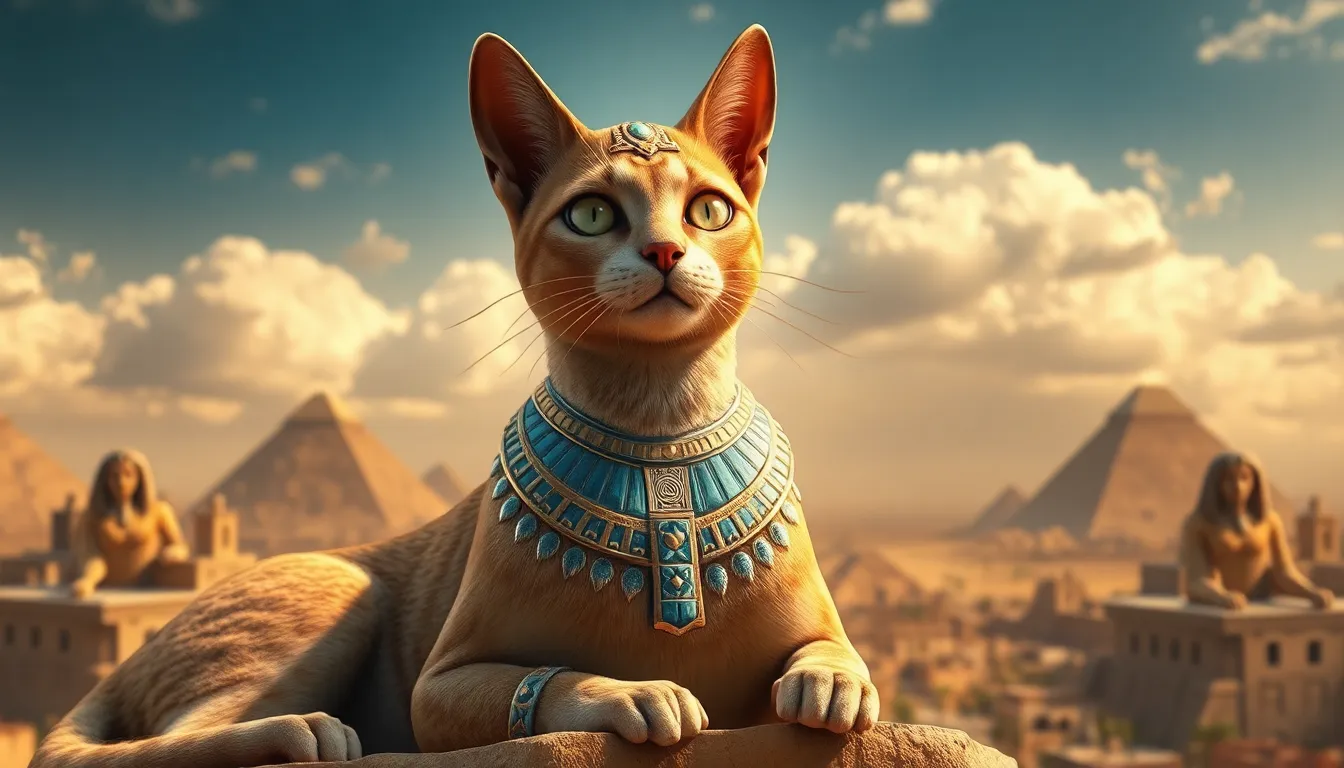Bastet: The Cat Goddess and Her Mythical Legacy
I. Introduction to Bastet
Bastet is a prominent figure in ancient Egyptian mythology, revered as the goddess of home, fertility, and domesticity, often depicted with the head of a lioness or as a domestic cat. She symbolizes the nurturing and protective aspects of femininity, embodying both warmth and ferocity. Cats held a significant place in ancient Egyptian culture, regarded as sacred animals that offered protection and companionship. Bastet’s dual nature as both a nurturing mother and a fierce warrior emphasizes the complexity of her character and the multifaceted beliefs of the ancient Egyptians.
II. Historical Origins of Bastet
Bastet’s historical origins can be traced back to the early periods of ancient Egyptian civilization. Initially, she was represented as a lioness, reflecting her fierce and protective nature. Over time, her image evolved into that of a domestic cat, symbolizing a gentler aspect of motherhood and domestic life.
Key archaeological findings have shed light on her worship, particularly in the city of Bubastis (modern-day Tell Basta), where she was the chief deity. Artifacts such as statues, amulets, and temple ruins reveal the significance of Bastet throughout Egyptian history.
III. Symbolism and Attributes of Bastet
Bastet is often depicted with several key attributes that highlight her multifaceted nature:
- Physical representations include feline features, a sun disk atop her head, and carrying a sistrum (a musical instrument).
- Symbolic meanings associated with Bastet encompass fertility, home protection, and joy.
- The significance of cats in her worship is profound, as they were seen as embodiments of her spirit and were often kept as sacred animals.
IV. Bastet in Egyptian Religion and Culture
Bastet occupies an important place in the Egyptian pantheon. She is often associated with other deities, such as Ra, the sun god, and Isis, the goddess of motherhood and magic. Her relationships with these deities further enhance her role as a protector and caregiver.
Daily life in ancient Egypt was influenced by Bastet’s ideals. Households would pay homage to her through small shrines and offerings, ensuring safety and prosperity. Festivals in her honor, particularly the festival of Bubastis, involved music, dancing, and feasting, highlighting the joyous aspects of her worship.
V. Mythological Stories and Legends
Bastet’s myths often explore her dual nature and her role in the cosmic order. One of the most prominent tales recounts how she defended the sun god Ra from the serpent Apep, symbolizing the eternal struggle between order and chaos. In another narrative, she is depicted as a nurturing mother, protecting her children and providing comfort.
Her fierce protection is also evident in stories where she punishes those who wrong her followers, illustrating her ability to balance nurturing with ferocity. When compared to other deities, Bastet’s narratives often emphasize her protective instincts and her connection to the domestic sphere, contrasting with the more martial or cosmic roles of gods like Sekhmet.
VI. Bastet’s Worship and Cult Practices
The cult of Bastet was particularly prominent in Bubastis, where temples dedicated to her were centers of worship and community gatherings. These temples were richly adorned and served as places of pilgrimage during festivals.
Rituals in her honor involved offerings of food, incense, and music. The role of priestesses was vital, as they conducted ceremonies and maintained the temple’s sanctity. The annual festival of Bubastis attracted thousands of worshippers who celebrated with processions, music, and feasting, showcasing the goddess’s joyful and nurturing aspects.
VII. Legacy and Influence of Bastet
The legacy of Bastet extends beyond ancient Egypt, influencing later cultures and mythologies. Throughout history, she has been associated with protection and motherhood, values that resonate in various traditions. In modern times, there has been a resurgence of interest in Bastet, with many people seeking to connect with her spirit through art, literature, and even modern pagan practices.
Contemporary representations of Bastet can be found in:
- Artwork that celebrates her feline form and attributes.
- Literature that draws on her mythology and symbolism.
- Pop culture references, including films and video games, where she is depicted as a powerful and nurturing figure.
VIII. Conclusion
Bastet’s significance in ancient Egyptian mythology is profound, highlighting the duality of nurturing and protection. Her legacy continues to resonate today, reminding us of the cultural importance of femininity, home, and the sacred connection we share with animals. As we reflect on the enduring legacy of the Cat Goddess, it becomes clear that Bastet’s influence is not only a relic of the past but a living testament to the values that continue to shape our understanding of the divine in contemporary society.




